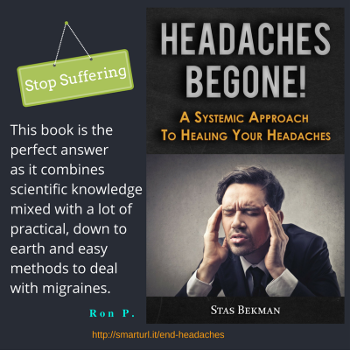Chapter II. General Examination
Description
This section is from the book "Diseases Of The Rectum And Pelvic Colon", by Martin L. Bodkin. Also available from Amazon: Diseases of the rectum and pelvic colon.
Chapter II. General Examination
The examination for the diagnosis of diseases affecting the rectum and anus is ordinarily looked upon by the physician and patient with a sense of repugnance, coupled with embarrassment. This is partly due to an inherited sense of shame to expose these parts, traditionally known to exist even in the savage races. Therefore, the physician usually hesitates to magnify the subject sufficiently to persuade the patient to submit to an ocular or digital examination.
The introduction of the finger or an instrument is associated with a hypersensitiveness often heightened by a traumatize. The degree of pain accompanying the examination is often dependent upon the dexterity of the examiner. In many instances the clumsy operator causes even more suffering to the patient than the disease itself.
When an ulcer, fissure or a sensitive hemorrhoid exists, the finger should be well lubricated and introduced on the side opposite the point indicated by the pain, then on withdrawal made to quickly pass over the objective point of examination.
More serious mistakes - the results of slipshod examinations - are made in the diagnosis of diseases of the rectum than in any other portion of the human body. This point cannot be emphasized too strongly and the criticism is more severe when the surgeon premeditated presumes to treat these apses in an ignorant manner. The constitutional and catarrh affections of the intestine tend to be either limited, or they later afford many opportunities for the careful consideration of the patient's ailments, and an attempt at diagnosis on the first visit may not be absolutely necessary. When, however, the patient presents himself with a painful fissure, bleeding from the rectum, or an acute inflammatory condition, he should be thoroughly examined in order to give him immediate relief, and. as a secondary consideration, for the protection of the physician's reputation as a competent practitioner.
It is not an uncommon occurrence for us to receive a patient from some professional friend, who has carelessly summarized a rectal condition, where an examination discloses a large septic area from an mischief-rectal abscess.
This criticism does not apply to cases presenting themselves for the treatment of a complicated fistula, or with the definite diagnosis of a chronic catarrh condition, or the pathological nature of an ulceration, but it should include the knowledge that the patient is suffering from a rectal disease, which is either positively understood or a fair idea formed as to its nature. Rectal diseases are among the most common ailments of civilized humanity, and are probably given the least consideration.
These remarks are earnestly intended to direct the general practitioner to a more conscientious and careful examination of these unfortunates. He will be rewarded not only pecuniary but with their deepest gratitude.
When we consider the manner in which the average human being lives, the luxuries and comforts afforded him, the social functions, the nervous strains and the diet faults necessarily encouraged by his environments, rectal diseases are a logical accompaniment of the worn-out body. Sedentary indoor occupations, unsuitable clothing, improper use of alcohol or the struggle for existence, interfere with the healthy physiological functions, or the proper nourishment of the body, and are a common cause of rectal disease.
Rectal diseases have been treated in the past by unscrupulous and unlicensed pile-doctors. Not having been considered a dignified branch of medicine or surgery, few cared to take up the study of such diseases, and, but for the efforts of a few practitioners of unquestionable ability and reputation these diseases would have been disregarded by. and almost unknown to the legitimate practitioner.
The preliminary oral examination of patients, as a rule, is worthless. Their descriptions are probably more meager than the ordinary information regarding common diseases. If the physician will realize this and take nothing for granted excepting the location of pain, the results, based upon further examination, will be immensely gratifying. In other words, the ordinary individual is more ignorant of the symptoms presented in diseases of the rectum and anus than is realized.
Local Examination by simply separating the buttocks may reveal in the anal ring or orifice, a fissure, hemorrhoids or prurient an, without the introduction of an instrument or the finger. When the disease is located higher up in the rectum or sigmoid, the proctorial or kaleidoscope may be necessary, but ordinarily the finger will suffice for the diagnosis of an inaugurated ulcer of the rectum, a stricture, a malignant growth, or poly.
However, the instruments which will be described later, form an advantageous addition to one's equipment, but are not absolutely necessary in all cases. In most instances the painful introduction of the speculum is entirely uncalled for, so that the average practitioner has little excuse in the majority of rectal diseases, even if the many instruments devised for diagnostic purposes in this region are not at hand. However, for the diagnosis of the catarrh diseases of the colon, sigmoid or rectum, the kaleidoscope is an absolute necessity, and will afford positive information if the physician is familiar with the picture presented in analogous conditions of the throat.
The local examination of a patient for diseases of the anal ring may be indicated by the description of a localized pain or other symptom in that region - for instance, the pain of a fissure or the itching of a prurient an is definitely located by the patient. When the disease is high up where the rectum is less sensitive, the description becomes less accurate and is often described as an ache, or a feeling of heat in the rectum, accompanied by the characteristic symptoms of the disease. An ulcer of the rectum will be accompanied in some instances with the discharge of pus and blood, and is often associated with a fissure, prurient an and rectal tenements.
Continue to:




